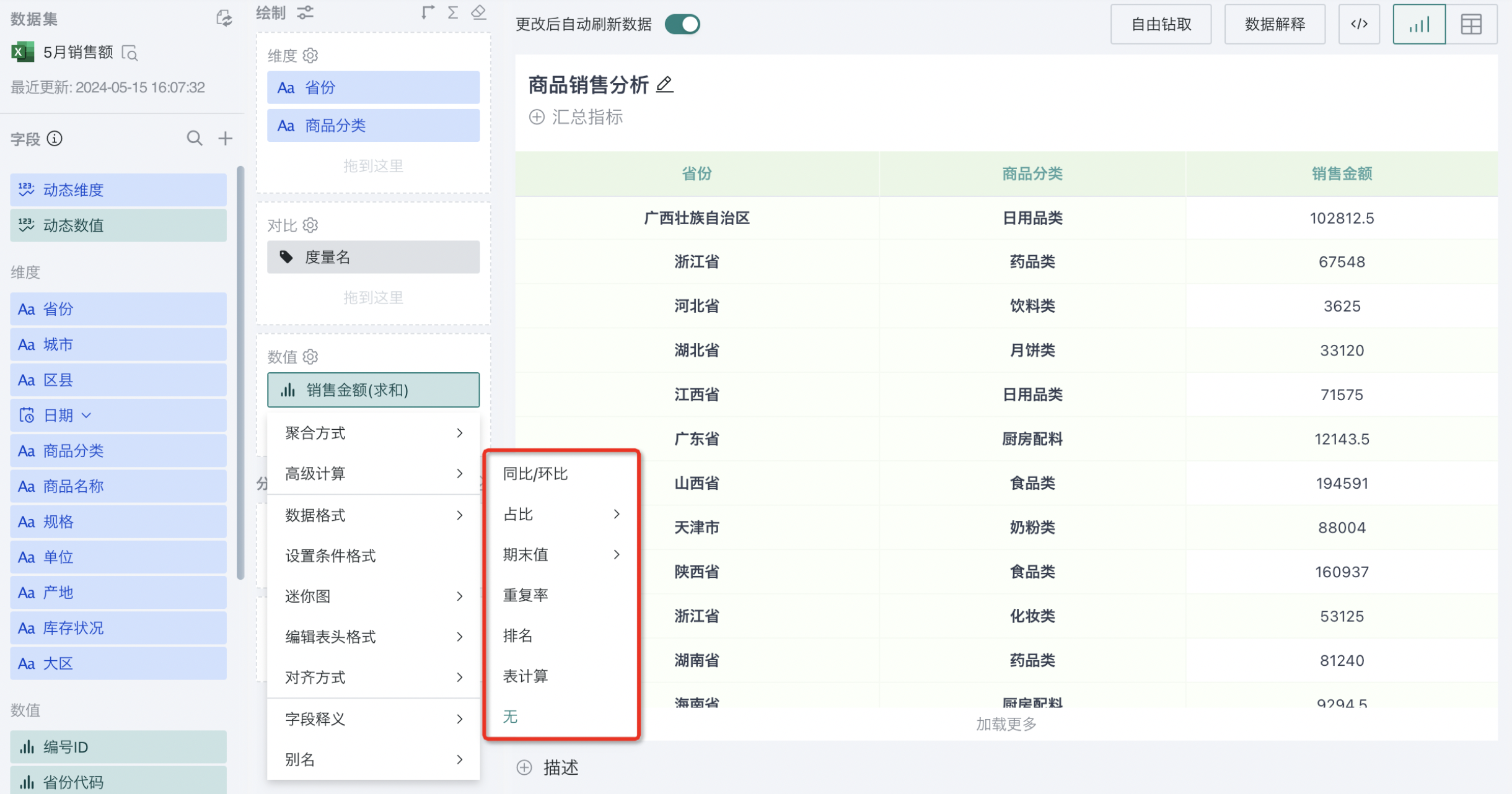Overview
1. Overview
Advanced calculations refer to implementing complex data analysis scenarios through intuitive visual configuration methods, such as year-over-year and month-over-month analysis, proportion calculations, ranking statistics, duplication rate detection, end-of-period value calculations, and table calculations. This allows users to efficiently and easily complete various data analysis scenarios without having to manually write complex functions.
Among them, table calculations allow users to more flexibly construct more complex calculation scenarios by configuring partition addressing and calculation methods. They can not only cover year-over-year, month-over-month, proportion, and ranking calculations, but also support cumulative values, moving calculations, nested calculations between various calculations, etc.

2. Getting Started
| Advanced Calculation Type | Description |
| [Year-over-Year and Month-over-Month](1-Year-over-Year and Month-over-Month.md) | Year-over-year and month-over-month analysis is a common method in data analysis. Combining year-over-year and month-over-month analysis can help us more easily discover outliers or abnormal trends in data. |
| Proportion | Proportion calculations are used to quickly calculate the proportion of data, making it convenient for users to view the proportion of certain data in the overall data. |
| [End-of-Period Value](4-End-of-Period Value.md) | End-of-period value usually refers to the specific numerical value corresponding to an indicator at the end of a specific time point (such as month-end, year-end, etc.). This value represents the cumulative result of all activities or changes over a period of time before that time point. |
| [Duplication Rate](5-Duplication Rate.md) | Duplication rate can be used in calculation scenarios such as (repeat purchase rate, repurchase rate). |
| Ranking | Ranking calculation refers to sorting a set of indicators through specific algorithms or formulas and giving the ranking of each indicator in the sort, making it convenient for users to compare data sizes. |
| [Table Calculation](7-Table Calculation.md) | In the process of data analysis, sometimes charts generated from raw data may not be able to meet deeper and more complex analysis needs. Table calculations can be used to further process and analyze aggregated data to meet more diverse analysis demands. |